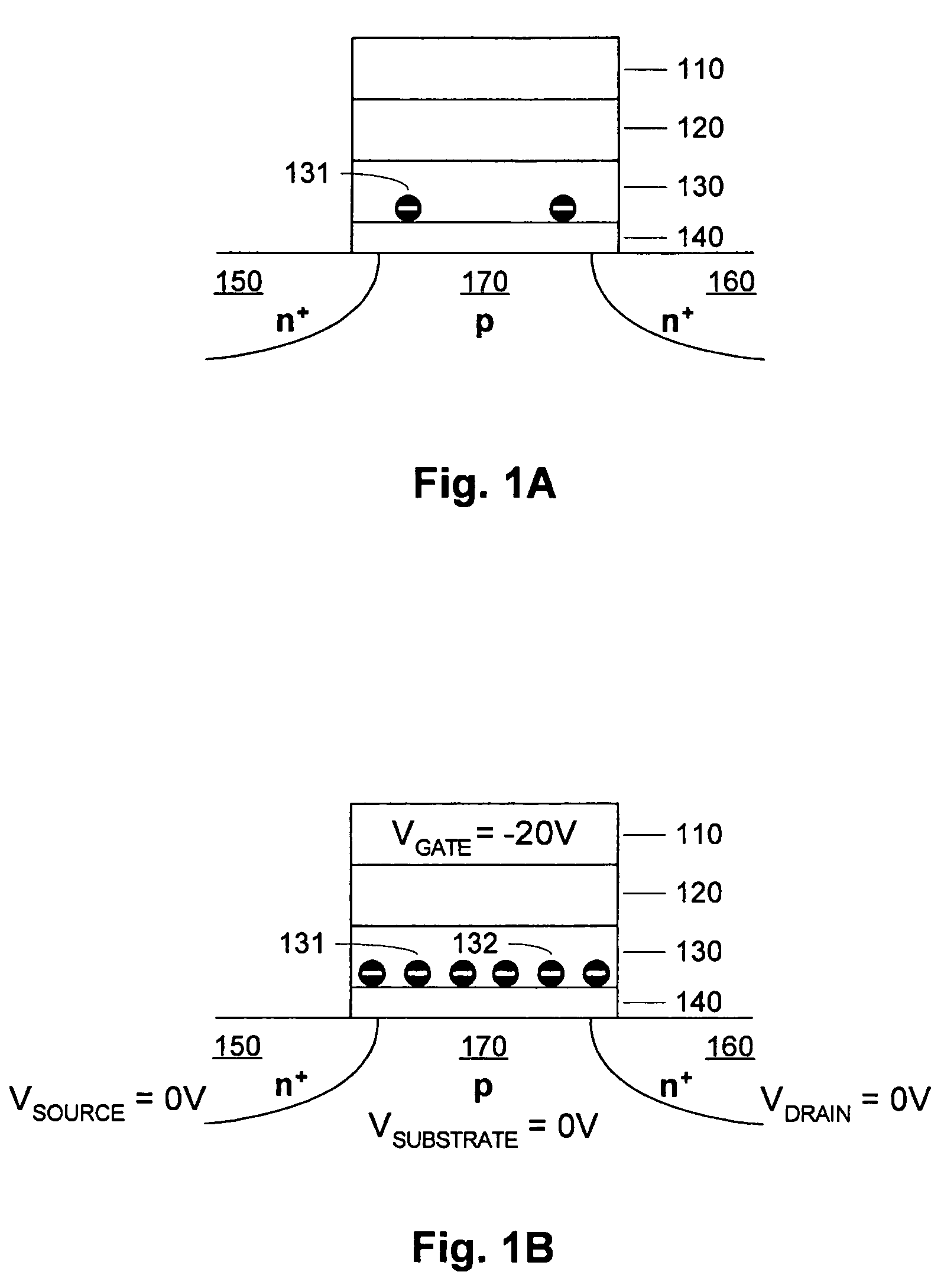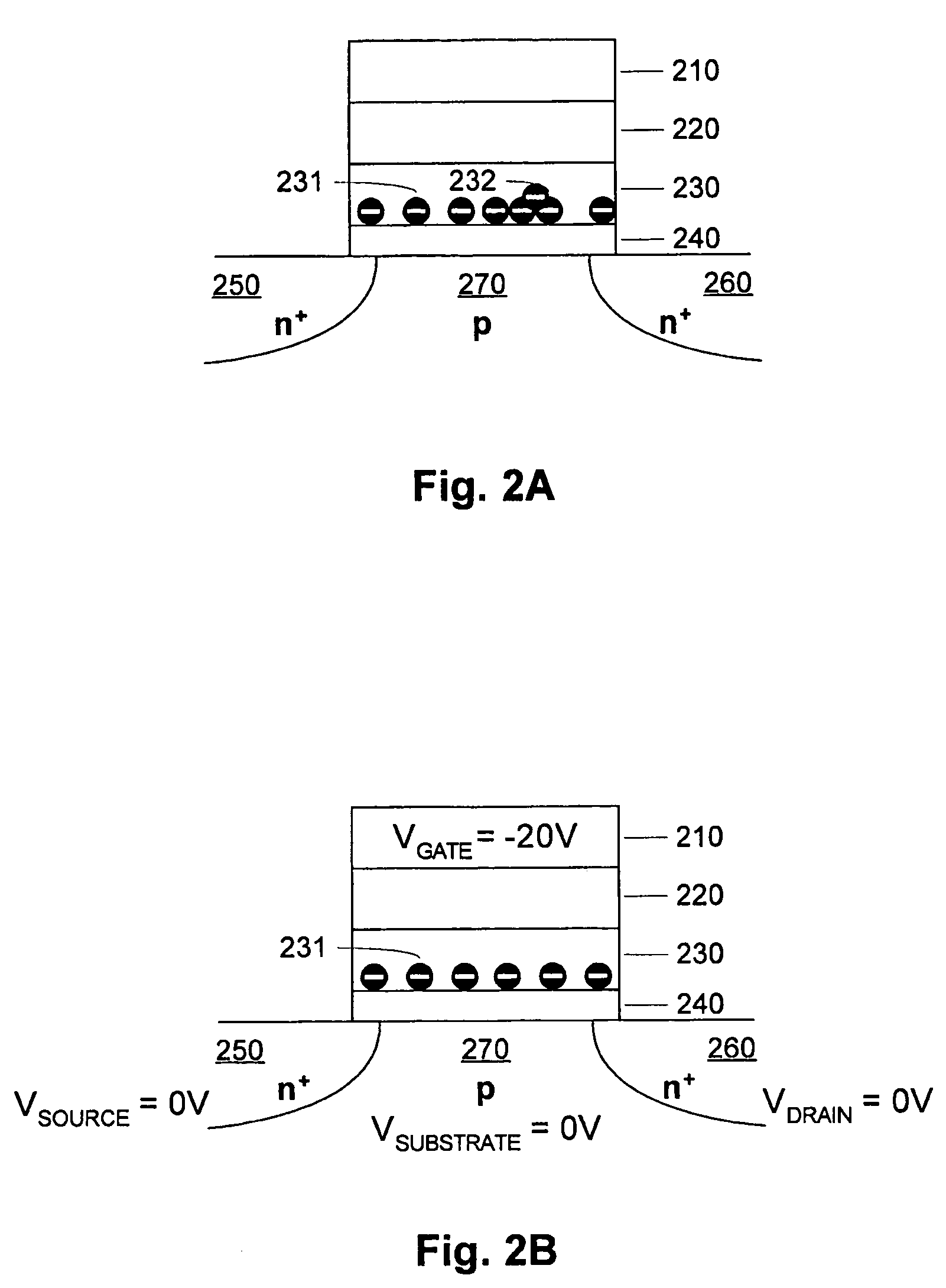Operation scheme for spectrum shift in charge trapping non-volatile memory
a non-volatile memory and spectrum shift technology, applied in static storage, digital storage, instruments, etc., can solve the problems of poor charge retention, and large vt distribution of erase state, so as to improve endurance and reliability
- Summary
- Abstract
- Description
- Claims
- Application Information
AI Technical Summary
Benefits of technology
Problems solved by technology
Method used
Image
Examples
Embodiment Construction
[0069]FIG. 1A is a simplified diagram of a charge trapping memory cell. The substrate includes n+ doped regions 150 and 160, and a p-doped region 170 between the n+ doped regions 150 and 160. The remainder of the memory cell includes a bottom dielectric structure 140 on the substrate, a charge trapping structure 130 on the bottom dielectric structure 140 (bottom oxide), a top dielectric structure 120 (top oxide) on the charge trapping structure 130, and a gate 110 on the oxide structure 120. Representative top dielectrics include silicon dioxide and silicon oxynitride having a thickness of about 5 to 10 nanometers, or other similar high dielectric constant materials including for example Al2O3. Representative bottom dielectrics include silicon dioxide and silicon oxynitride having a thickness of about 3 to 10 nanometers, or other similar high dielectric constant materials. Representative charge trapping structures include silicon nitride having a thickness of about 3 to 9 nanometers...
PUM
 Login to View More
Login to View More Abstract
Description
Claims
Application Information
 Login to View More
Login to View More - R&D
- Intellectual Property
- Life Sciences
- Materials
- Tech Scout
- Unparalleled Data Quality
- Higher Quality Content
- 60% Fewer Hallucinations
Browse by: Latest US Patents, China's latest patents, Technical Efficacy Thesaurus, Application Domain, Technology Topic, Popular Technical Reports.
© 2025 PatSnap. All rights reserved.Legal|Privacy policy|Modern Slavery Act Transparency Statement|Sitemap|About US| Contact US: help@patsnap.com



